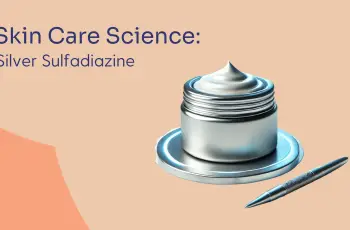
Lactobionic Acid Will Gently Exfoliate Even the Most Sensitive Skin Types
While exfoliation is one of the best ways to remove dead skin cells and boost your glow, many physical and chemical exfoliants can be too harsh in practice—and that especially goes if you have sensitive skin. If your complexion seems to react at the mere sight of a nearby acid but you still could use a bit of rejuvenation, lactobionic acid is a gentler option that may be worth a try. Aside from its exfoliating properties, this ingredient also works to hydrate the skin and support the skin barrier, among other benefits (and all with minimal to no irritation). Ahead, dermatologists explain all you need to know about lactobionic acid, from its benefits to where it best fits into your routine.
Meet the Experts
Hannah Kopelman, MD, is a board-certified dermatologist at Kopelman Aesthetic Surgery in New York City.
Karyn Grossman, MD, is a board-certified dermatologist and cosmetic surgeon at Grossman Dermatology.
What Is Lactobionic Acid?
Lactobionic acid is an exfoliating and hydrating skincare ingredient that’s classified as a polyhydroxy acid (PHA). It comes from milk sugars and is known to be milder and more gentle on the skin than alpha-hydroxy acids (AHAs) and beta-hydroxy acids (BHAs).
“What I find so appealing about lactobionic acid is how gentle it is while still delivering real results,” says board-certified dermatologist Hannah Kopelman, MD. “It’s derived from lactose, which is a milk sugar, and that gentleness really sets it apart.”
Board-certified dermatologist and cosmetic surgeon Karyn Grossman, MD, explains that lactobionic acid has a larger molecular structure than AHAs and BHAs, which makes it less likely to deeply penetrate the skin, allowing for a gentler exfoliation process.
Benefits of Lactobionic Acid
Interested in giving lactobionic acid a try (or need a bit more convincing)? Below are a few ways this skincare ingredient can benefit your skin:
Gentle exfoliation: Lactobionic acid exfoliates and helps remove dead skin cells from the skin’s surface without being as harsh as some other types of skincare acids. This means it’s less likely to cause irritation, stinging, and burning sensations. “It works by loosening the bonds between dead skin cells, which helps promote cell turnover,” Kopelman says. “This can lead to smoother skin, fewer fine lines, and that radiant, healthy glow we all strive for.”
Hydration: People with dry skin can benefit from incorporating lactobionic acid into their skincare routine because of the ingredient’s hydrating properties. “One of the standout features of lactobionic acid is its ability to attract and retain moisture,” Grossman says. “It acts as a humectant, drawing water into the skin, which helps improve skin hydration and reduce dryness.”
Antioxidants: Lactobionic acid has antioxidant properties, which can protect your skin.1 “It helps protect your skin from free radicals—those pesky molecules that can cause premature aging,” Kopelman says. “By shielding your skin from oxidative stress, lactobionic acid helps maintain a youthful appearance.”
Supports the skin barrier: Lactobionic acid helps strengthen the skin’s barrier health. 1 “This makes it especially beneficial for those with compromised skin, whether it’s due to environmental factors or underlying conditions like eczema or rosacea,” Kopelman says.
Reduces appearance of fine lines: “By gently exfoliating the skin and enhancing moisture retention, lactobionic acid can minimize the appearance of fine lines and wrinkles, making the skin appear smoother and more plump,” Grossman says.
Who Should Use It
Lactobionic acid is suitable for many different skin types, though dermatologists say it can be a particularly good option for people with slightly sensitive skin or those who are new to exfoliation and nervous about irritating their complexion. “It’s such a gentle exfoliant that even those who can’t tolerate AHAs or BHAs can usually use it without any issues,” Kopelman says. “But really, almost anyone can benefit from lactobionic acid, whether you’re looking to smooth out your skin, add a bit more hydration, or protect against the signs of aging.” Because of lactobionic acid’s moisturizing properties, it can also be good for people with dry or dehydrated skin, Grossman tells us.
If you have an allergy to lactose or milk, be cautious about using lactobionic acid, given that it’s derived from lactose. As always, you should ask your dermatologist if you have any uncertainty about whether the ingredient seems safe for you to try.
How to Use It
Lactobionic acid may be significantly gentler than most exfoliants, but proper use is still important to ensure you get maximum benefits while keeping your skin happy. A few top tips to follow are below:
Let your skin adjust: The first rule of thumb, as with most skincare products, is to start slow. “When incorporating lactobionic acid into your skincare routine, start by using it two to three times a week, especially if you are new to exfoliants,” Grossman says. “This allows your skin to build tolerance. As your skin adjusts, you can increase usage to every other day or even daily, depending on your skin’s response.”
Keep your skin hydrated: After using lactobionic acid, it’s important to use a good moisturizer. “This helps seal in the moisture and keep your skin feeling soft and supple,” Kopelman says.
Wear plenty of SPF: Keep in mind that exfoliants like lactobionic acid can make your skin more sensitive to the sun, so you’ll need to be diligent about wearing sunscreen. “Make sure you’re applying sunscreen every day, even if it’s cloudy,” Kopelman says. “Protecting your skin from UV damage is crucial.”
Stick to nighttime use: Grossman suggests using lactobionic acid at night, since exfoliating products can make your skin more sensitive to the sun.
Be mindful of your routine: Grossman also suggests using caution when combining lactobionic acid with other strong exfoliants or retinoids. “I usually suggest that you use either a retinoid or an acid on a given evening,” Grossman says. “Those with very oily skin may tolerate a lactobionic acid toner followed by a retinoid, but this would need to be worked up to very gradually.”
Check for sensitivity: As with other skincare products, consider doing a patch test before incorporating lactobionic acid into your skincare routine. This gives you a chance to see how your skin responds to the product, and is especially important if your skin is reactive.
The Final Takeaway
Given lactobionic acid balances exfoliating and hydrating properties while being gentle on sensitive skin, it may just be the skincare ingredient you never knew you needed. Dermatologists say it works for most skin types, so while you should patch-test if you’re worried about a reaction, this is a good option to consider if you’re looking for a way to achieve a rejuvenated glow with minimal irritation.


